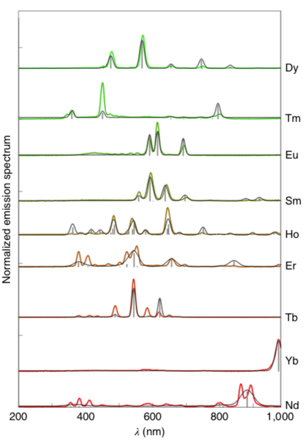
Scientific Achievement
Taking advantage of a microscope detection scheme developed by Foundry staff, a team of users detected cathodoluminescence emission spectra from individual sub-20-nm nanoparticles in 9 distinct colors.
Significance and Impact
This study provides the first demonstration of functional cathodoluminescence (CL) in electron microscopy. This new detection scheme could enable a new bioimaging technology capable of resolving individual proteins and protein interactions with color coding that indicates function.
Research Details
- The researchers synthesized lanthanide-doped nanoparticles less than 20 nm in size. Nanoparticles were doped with different lanthanides to generate different colored emissions.
- At the Molecular Foundry, the research team developed a custom detection scheme for the electron microscope in order to capture the cathodoluminescence of individual nanoparticles. Measured spectra were compared to simulations for each dopant.
- The results demonstrate this technique provides information at the resolution and brightness required for bioimaging applications.

